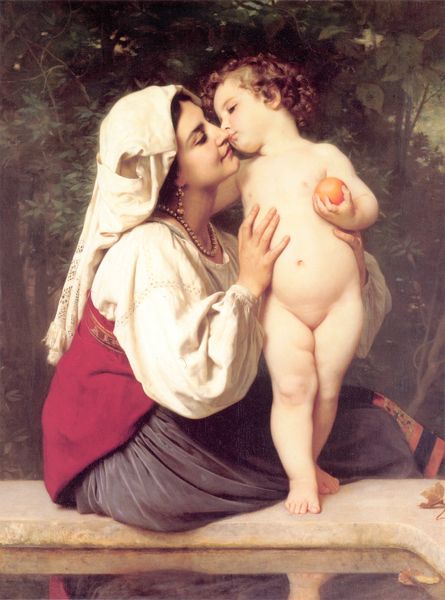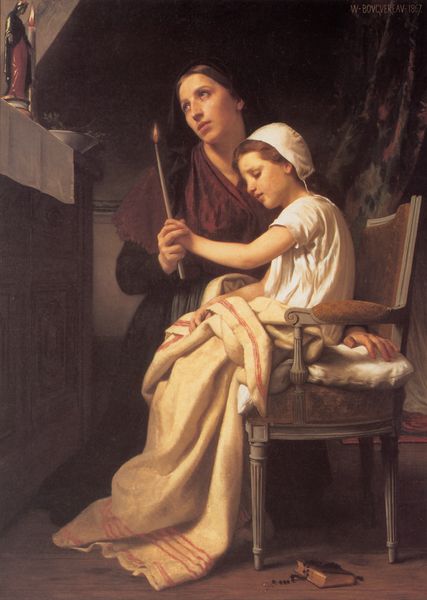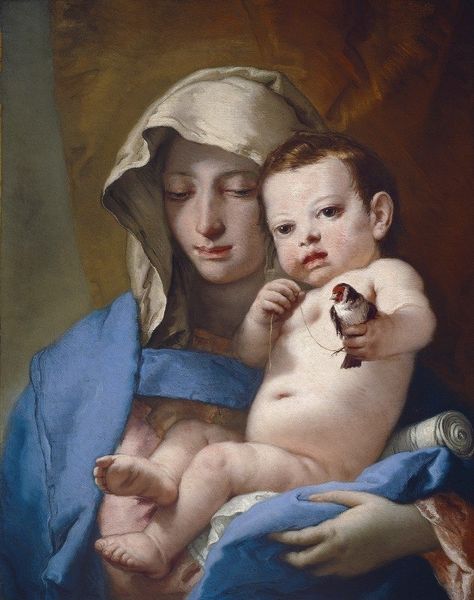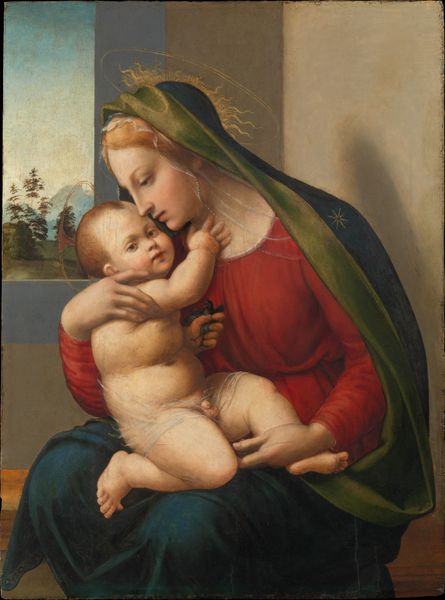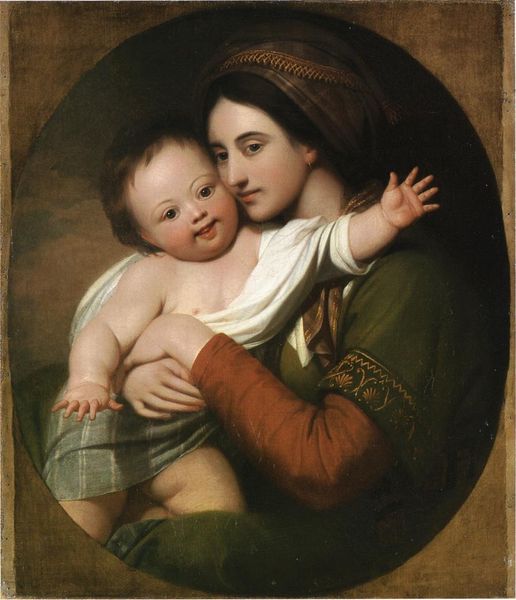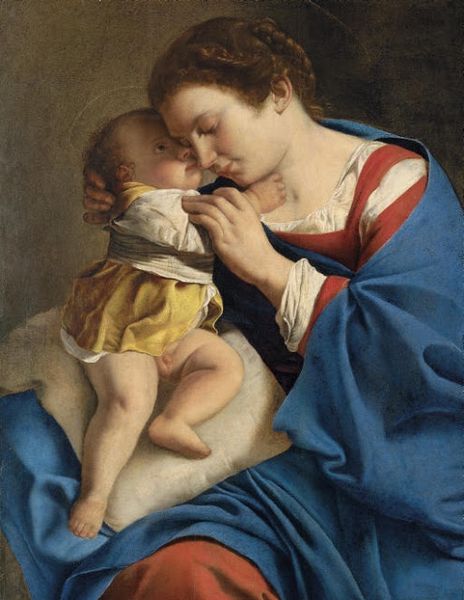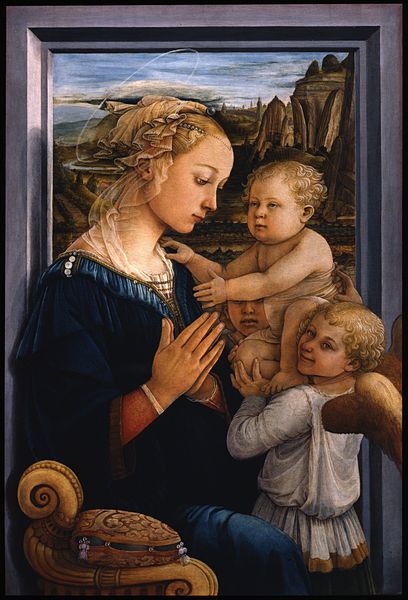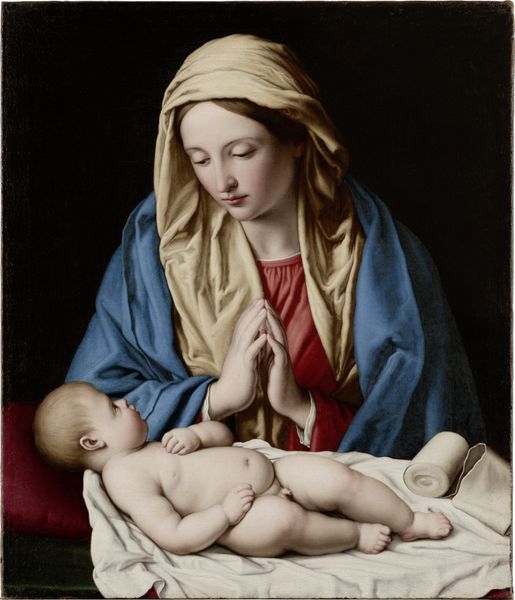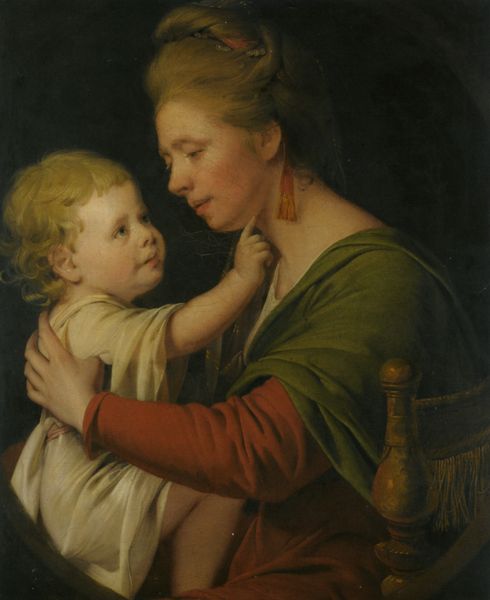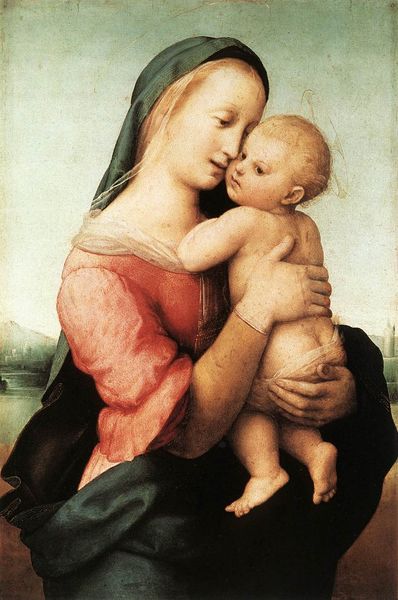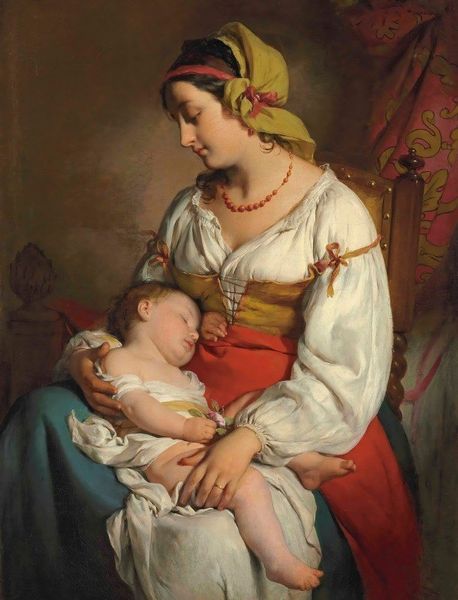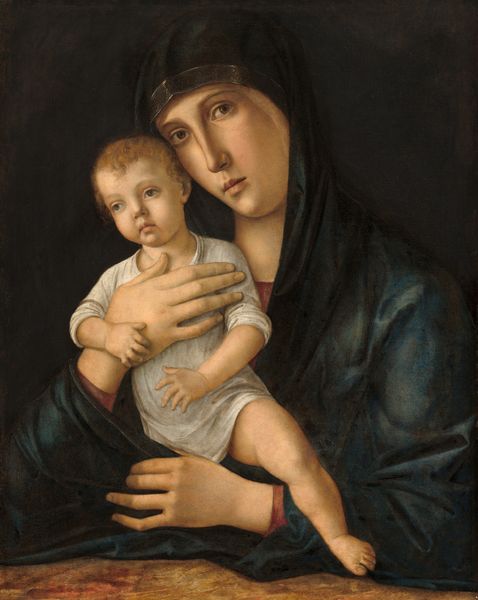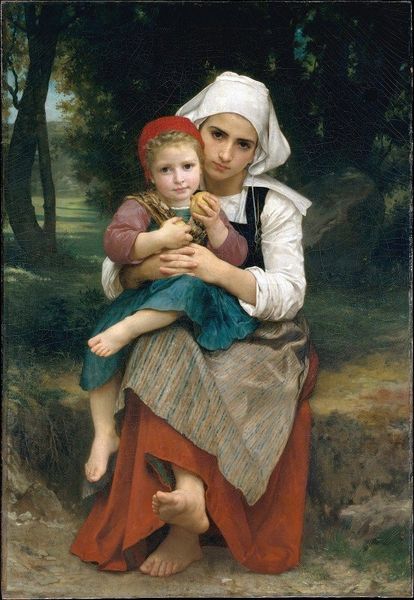
Dimensions: 109.2 x 83.2 cm
Copyright: Public domain
Editor: So, this is William Bouguereau’s "Woman of Cervara and her child," painted in 1861. There's a strong sense of intimacy. What do you see in this piece, beyond just a mother and child? Curator: I see more than just a sentimental scene. Look at the "Woman of Cervara"—Cervara was a specific region. Bouguereau is participating in the Romantic-era fascination with the "exotic" peasant. The painting exoticizes and idealizes the woman as a representation of 'natural' motherhood within the historical context of burgeoning nationalism. But what are we missing in that narrative? Editor: You mean like, how much agency did these women actually have? It feels like it's portraying this idealized, possibly inaccurate image. Curator: Precisely! Bouguereau offers us a very particular vision of womanhood – one carefully curated for a bourgeois audience, who viewed her as the essence of Italian femininity. Consider her clothing, how it treads the line between local and 'picturesque'. Her ‘exoticism’ renders her timeless and outside modernity. It’s as though her Italian identity can never become a fully realized modernity, unlike France, say, that could also aspire toward “progress.” Where does that leave her and other working-class mothers like her? Editor: That makes me consider it differently. So it’s less about a genuine representation, and more about a constructed image that appeals to specific social and political viewpoints? Curator: Exactly. We have to consider the gaze. Whose gaze does the artist reflect? How does it feel to be an audience looking in at such a picture today? Editor: This reframing really changes the picture and how I read its message about this particular culture. Curator: Indeed, analyzing art through an intersectional lens enables us to have very critical and thought-provoking conversations about how societal power structures inform artistic creation.
Comments
No comments
Be the first to comment and join the conversation on the ultimate creative platform.
